The Importance of E-commerce Website Design in the Digital Age
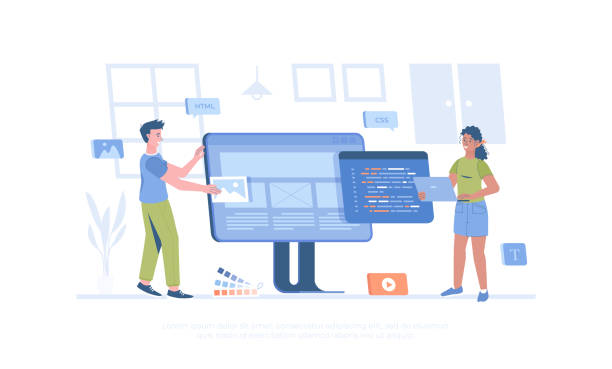
In today’s fast-paced world, where geographical boundaries for commerce have faded, e-commerce website design is no longer an option but an undeniable necessity.
Imagine having a business limited to working hours and a physical location; in contrast, an online store can operate 24 hours a day, 7 days a week, offering your products and services to a broad audience worldwide.
This #digital #transformation not only provides unparalleled opportunities for growth and development but also enables businesses to establish their position in fierce competition.
Many modern customers prefer to research products online before, or even instead of, making an in-person purchase.
The absence of an e-commerce website means losing a significant portion of this potential market.
With the #increasing penetration of the internet and smartphones, customer expectations for easy and quick access to products and services have risen.
A professional e-commerce website design allows you to meet and even exceed these expectations.
This doesn’t just mean having a page to display products; it involves creating a smooth user experience, easy search functionality, comprehensive product descriptions, a high-quality image gallery, and a secure and fast checkout process.
Furthermore, data obtained from user behavior in the online store will be a valuable resource for #analysis and improving your marketing and sales strategies.
This data-driven approach provides a clear path for continuous optimization and increased return on investment (ROI).
Many traditional businesses face challenges such as limited space, high rental costs, and restricted customer access.
E-commerce website design eliminates these obstacles.
You can offer an unlimited number of products in your online store and, through SEO strategies and digital marketing, reach customers beyond your neighborhood or city.
This geographical expansion not only increases your sales but also promotes your brand on a broader scale.
Ultimately, having a powerful e-commerce website means creating a digital asset that brings long-term value to your business and makes it more resilient to fluctuations in the physical market.
This smart investment guarantees a brighter future for your business.
Is your e-commerce website ready to attract maximum customers and increase sales? Rasaweb transforms your online business with modern and efficient e-commerce website design.
✅ Increased speed and improved SEO
✅ Excellent user experience on mobile and desktop⚡ Get a free consultation on e-commerce website design from Rasaweb!
Initial Stages of E-commerce Website Design
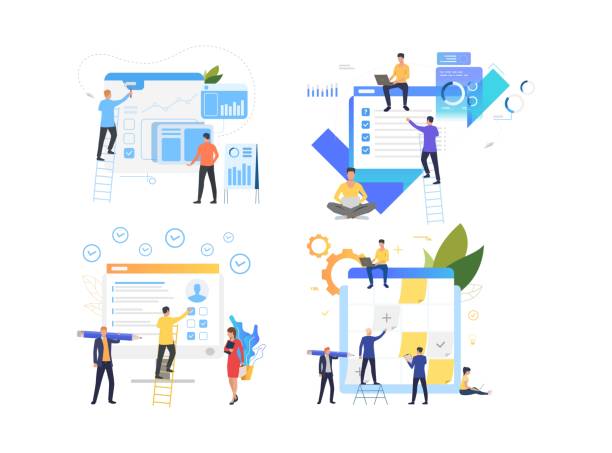
Before taking any practical steps for e-commerce website design, precise and strategic planning is of paramount importance.
This stage includes defining goals, understanding the target market, and competitor analysis.
First, you need to determine your expectations from this online store; do you simply intend to sell physical products, or offer specific services? Is your goal local or global sales? Answers to these questions will define the overall direction for website design and development.
Then, precise understanding of the target audience becomes important.
Their age, gender, interests, purchasing habits, and the problems your product can solve will all influence the design of the user experience and site content.
This deep understanding helps you create an e-commerce website design tailored to your users’ needs.
In the next step, competitive research is essential.
Examine your main competitors’ websites.
What are their strengths and weaknesses? What do they do well, and where do they fall short? This analysis helps you identify market gaps and create a competitive advantage for your e-commerce website.
For example, if competitors have weak customer support, you can differentiate yourself by offering excellent support services.
Also, you need to decide on the type of products you intend to sell and how to categorize them.
A logical and hierarchical categorization structure helps users easily find their desired products and provides a better user experience.
Choosing the right platform is also a key decision in the initial stages of e-commerce website design.
This choice depends on your budget, technical knowledge, and future needs.
Will you use ready-made platforms like Shopify or WooCommerce, or do you need a custom solution? Each of these options has its own advantages and disadvantages that must be carefully considered.
Furthermore, considering the scalability of the site for future business growth is crucial.
An e-commerce website must be able to handle increased traffic and product numbers.
Finally, setting a realistic budget and timeline for each stage of the project is highly important to prevent problems and delays.
This comprehensive planning is the backbone of a successful e-commerce website design.
Choosing the Right Platform for Your Online Store
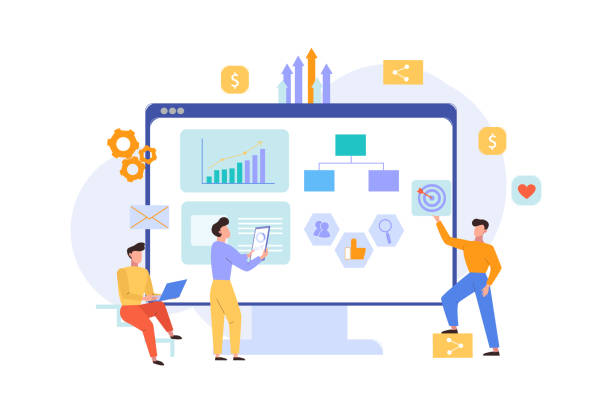
Choosing the right platform for e-commerce website design is a critical decision that impacts the performance, scalability, and long-term success of your online business.
Various options are available in the market, each with its unique features, advantages, and disadvantages.
Hosted platforms like Shopify and BigCommerce offer all-in-one solutions that include hosting, security, and store management tools.
These platforms are ideal for users with limited technical knowledge or those who want to launch their store quickly, as they minimize technical complexities.
Shopify, due to its ease of use, strong support, and vast ecosystem of apps and templates, is a popular choice for many small and medium-sized businesses looking to build an online store.
In contrast, open-source platforms like WooCommerce (which is a plugin for WordPress) and Magento offer users more flexibility and control.
WooCommerce is an excellent choice for those already familiar with WordPress and seeking e-commerce website design with high customization capabilities.
This platform allows integration with thousands of WordPress plugins and themes, enabling you to design your store exactly to your needs.
Magento, on the other hand, is suitable for larger and enterprise-level businesses that require high scalability, complex functionalities, and deep customization, but it demands more technical knowledge and has higher development and maintenance costs.
When choosing a platform, you should consider factors such as cost, ease of use, SEO capabilities, payment gateway support, security, marketing features, and scalability.
Each platform offers a set of tools and features that must align with your business needs.
For instance, if you aim to sell to international markets, support for multiple currencies and languages is particularly important.
A thorough review of these aspects will help you make the best decision for your online store platform.
Ultimately, the right decision at this stage can lay the groundwork for the success or failure of your e-commerce website design project.
This comparison table can help you make a decision:
| Platform | Advantages | Disadvantages | Suitable For |
|---|---|---|---|
| Shopify | Ease of use, strong support, high security, beautiful themes | Monthly fees, limitations in deep customization, transaction fees (in some plans) | Startups, small and medium-sized businesses, quick sales |
| WooCommerce (WordPress) | High flexibility, full control over data, large user community, thousands of plugins | Requires more technical knowledge, hosting and security management is user’s responsibility | Small and medium-sized businesses, those who already use WordPress, need for customization |
| Magento | Very high scalability, enterprise-level capabilities, infinite customization | High complexity, requires specialized technical knowledge, high development and maintenance costs | Large and enterprise-level businesses, projects with complex needs |
User Interface and User Experience (UI/UX) Design in E-commerce Websites
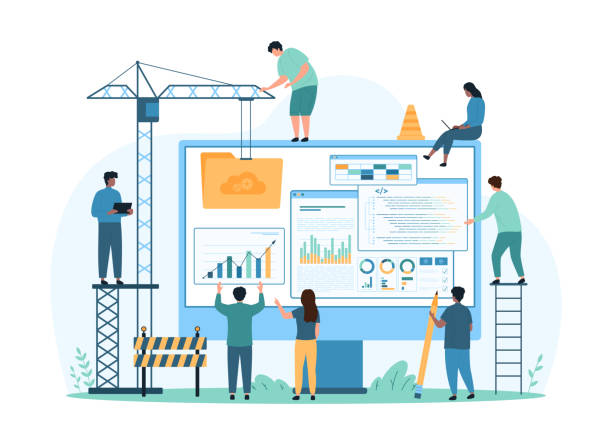
One of the most crucial success factors in e-commerce website design is attention to User Interface (UI) and User Experience (UX).
While these two concepts are related, they play different roles.
UI pertains to the website’s appearance and visual elements like colors, fonts, buttons, and images; whereas UX deals with the user’s feelings when interacting with the site, ease of use, and their satisfaction with the purchasing process.
An e-commerce website with beautiful UI but poor UX will discourage users and reduce conversion rates.
The main goal is to create a seamless and enjoyable experience for customers so they can easily find products, obtain necessary information, and complete the purchasing process.
In UX design, elements such as easy navigation, page loading speed, and responsive design for proper display on various devices (mobile, tablet, desktop) are critically important.
Most users today connect to the internet via their smartphones, so mobile-first design should be prioritized.
Product pages should include high-quality images, complete and accurate descriptions, and customer reviews.
Adding advanced search capabilities and product filters helps users quickly access what they are looking for.
The checkout process should also be as simple and fast as possible, with the fewest clicks and shortest forms.
Any complexity or ambiguity at this stage can lead to cart abandonment.
UI elements also play a significant role in attracting and retaining users.
Using appropriate colors, attractive visual layouts, and readable typography can enhance your brand’s credibility and improve the overall user experience.
Call-to-Action buttons should be clearly visible and guide users to the next steps.
Additionally, displaying security certificates and electronic trust symbols assures users that their personal and financial information is safe.
An e-commerce website design that pays close attention to UI/UX not only attracts customers but also converts them into loyal patrons and directly impacts conversion rates and profitability.
Investing in this area is an investment in the long-term success of your e-commerce business.
Do you dream of a thriving online store but don’t know where to start?
Rasaweb is your comprehensive solution for e-commerce website design.
✅ Attractive and user-friendly design
✅ Increased sales and revenue⚡ Get a free consultation now!
SEO and Content Marketing for Increased Store Visibility
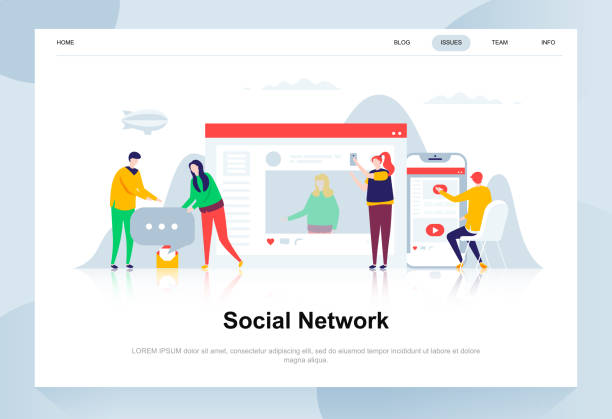
After designing your e-commerce website, the next step is to ensure potential customers can find you.
SEO (Search Engine Optimization) and content marketing are two powerful strategies that work hand-in-hand to increase your online store’s visibility and drive targeted traffic to it.
SEO means optimizing your website to rank higher in search engine results like Google, which leads to organic (free) traffic.
This includes optimizing keywords, site speed, URL structure, meta descriptions, and link building.
For SEO of an e-commerce website, product and category keywords are especially important.
You need to conduct extensive keyword research to understand what phrases your customers use to search for similar products.
Then, naturally embed these keywords in product titles, descriptions, and category page content.
Furthermore, optimizing product images using appropriate Alt tags and compressing them to increase loading speed plays a significant role in SEO.
Correct internal linking helps search engines better understand your site’s structure and correctly assess the value of different pages.
Content marketing also means creating and distributing valuable content relevant to your products that attracts and retains target audiences.
This content can include blog articles, buying guides, product introduction videos, infographics, or even podcasts.
The goal is not only to sell your products but also to become a trusted authority in your specialized field.
For instance, if your e-commerce website sells sportswear, you could publish articles on the benefits of different sports or a guide to choosing the best athletic shoes.
This content not only targets more keywords and aids SEO but also builds trust and loyalty among customers.
Combining SEO and content marketing is a long-term and sustainable strategy for increasing visibility and sales.
Quality content naturally earns links and gets shared, which in turn aids SEO.
Conversely, SEO ensures your valuable content is seen by more people.
This positive cycle ultimately leads to increased traffic, conversion rates, and the sustainable growth of your e-commerce business.
After designing your e-commerce website, these two aspects should by no means be overlooked.
Security and Online Payment Gateways
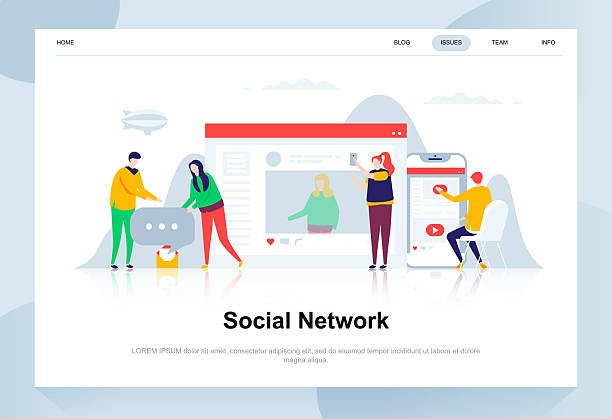
One of the most significant concerns for any user intending to purchase online is the security of personal and financial information.
Therefore, in the process of e-commerce website design, ensuring security must be a top priority.
Neglecting this issue can lead to loss of customer trust, damage to brand reputation, and even legal consequences.
The first step in ensuring security is to use an SSL (Secure Sockets Layer) certificate.
This certificate encrypts the communication between the user’s browser and the website server, ensuring that sensitive information, such as bank card details, is transmitted securely.
The presence of a green lock icon in the browser’s address bar indicates active SSL and site credibility, which is essential for any online store.
Choosing a secure and reliable online payment gateway is also of high importance.
Intermediate payment gateways like Zarinpal, IDPay, or direct bank transfers play a vital role in the purchasing process.
These gateways are responsible for processing financial transactions securely and quickly.
When selecting a payment gateway, you should consider factors such as transaction fees, support for different currencies (in case of international sales), simplicity of the payment process for the user, and the level of security provided.
Ensuring that your chosen payment gateway complies with PCI DSS (Payment Card Industry Data Security Standard) security standards is crucial.
Your e-commerce website should offer multiple payment options to customers to provide greater flexibility and improve their shopping experience.
In addition to SSL and payment gateways, adhering to general security principles is essential for an e-commerce website.
This includes regular updates of the platform and plugins, using strong passwords, regular data backups, and protection against DDoS attacks and SQL injection.
Installing a Web Application Firewall (WAF) can also provide an additional layer of security.
Educating staff about best security practices and awareness of phishing and other cyber threats is also of high importance.
Any negligence in security can lead to the loss of customer information and severe damage to the reputation of your online store.
Therefore, the security section must be continuously reviewed and strengthened to ensure your e-commerce website design is completely secure and trustworthy.
Product and Inventory Management in E-commerce Websites
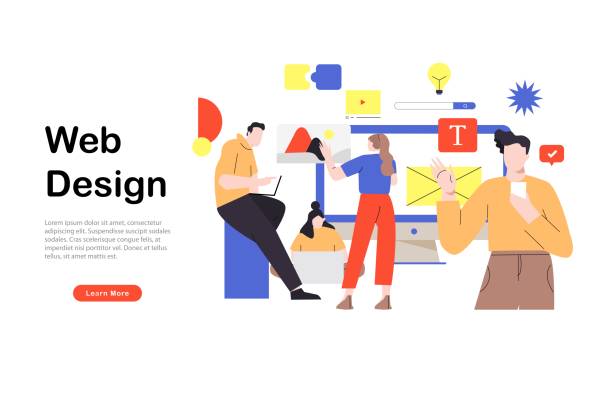
After launching and designing an e-commerce website, proper product and inventory management is one of the main yet crucial challenges for the smooth and successful operation of your online store.
Inefficient management can lead to customer dissatisfaction, lost sales, and even financial losses.
Every product listed on your website must have complete and accurate descriptions.
These descriptions should not only include technical specifications and uses but also highlight the product’s benefits for the customer.
Using high-quality images and videos from various angles helps customers gain a better view of the product and make more informed decisions.
Additionally, displaying reviews and ratings from previous customers adds credibility to your product and store and builds trust with new buyers.
The Inventory Management System (IMS), often part of your e-commerce website design platform, must be carefully implemented.
This system allows you to track the exact quantity of available products, receive low-stock alerts, and even enable automatic reordering.
An efficient inventory management system prevents the sale of out-of-stock products (which leads to order cancellations and customer dissatisfaction).
It also helps you identify the best time for restocking and prevents excessive accumulation of unnecessary goods.
For products with multiple attributes such as size, color, or model, managing variations is highly important.
Your online store should allow users to easily switch between these options and be aware of the availability of each option at all times.
Automating product and inventory management processes, such as automatic inventory updates after each sale, can minimize time and human error and increase efficiency.
Finally, sales and inventory data should be periodically analyzed to identify customer purchasing patterns, best-selling, and slow-moving products.
These analyses help you optimize your marketing and purchasing strategies and ensure better investment in your e-commerce website.
Accurate management of this section forms the backbone of a successful e-commerce website design.
Below is a table of key information required for each product:
| Field | Description | Importance |
|---|---|---|
| Product Name | Accurate and attractive product title, including keywords | SEO, product identification by user |
| SKU/Product ID | Unique code for inventory tracking | Inventory management, warehousing operations |
| Price | Product selling price (including discounts if any) | Purchase decision, financial transparency |
| Product Description | Full details, features, benefits, how to use | User information, SEO, reduction of support inquiries |
| Images and Video | High-quality images from various angles, introduction video | Visual appeal, aids decision-making |
| Categories and Tags | Product categorization in the logical site structure, related keywords | Easy navigation, SEO |
| Stock Quantity | Number of products available in stock | Prevents selling out-of-stock products, order management |
| Variant Attributes (e.g., color, size) | Different options available for a product | Easy selection for user, more accurate inventory management |
| Customer Reviews and Ratings | Feedback and ratings from previous customers | Trust-building, social proof |
Support and After-Sales Services in E-commerce
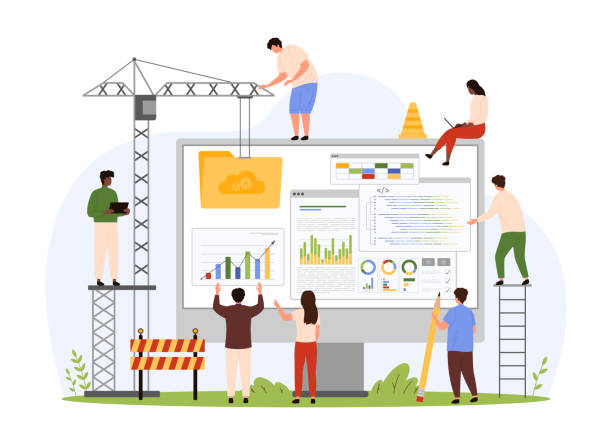
The sustained success of any e-commerce website design is not limited to attracting new customers but also depends on retaining existing customers and turning them into loyal brand advocates.
In the world of e-commerce, support and after-sales services are of particular importance because customers cannot physically interact with the product or seller.
A robust support system answers customer questions, resolves their issues, and ultimately improves their overall shopping experience.
These services can include quick email responses, live online chat, phone support, and even a ticketing system for tracking issues.
Providing transparent information regarding return policies and warranties is of high importance.
Customers should easily be able to find these policies and be aware of their rights.
The product return process should be as simple and hassle-free as possible.
An easy return process not only reduces customer dissatisfaction but can also lead to increased trust and future purchases.
Many successful online stores offer free returns as a competitive advantage.
Additionally, providing order tracking numbers and continuous updates on shipping status manages customer expectations and reduces their anxiety.
Technologies like Artificial Intelligence and chatbots can also be effective in improving customer service on an e-commerce website.
Chatbots can answer frequently asked questions and guide users toward appropriate information or products, which helps reduce the workload of the support team and provides faster responses.
However, it is important that customers can speak with a real person when needed.
Creating a comprehensive Frequently Asked Questions (FAQ) section and a Knowledge Base that answers common questions can also help customers find solutions to their problems themselves and reduce the need to contact support.
Ultimately, an e-commerce website that prioritizes customer support not only increases customer satisfaction but also leads to the creation of a loyal community of buyers.
This loyalty is one of the most valuable assets after e-commerce website design and ensures long-term profitability.
Is your company website as professional and trustworthy as it should be? With specialized corporate website design by Rasaweb, create an online presence that reflects your credibility and attracts more customers.
✅ Build a powerful and professional image for your brand
✅ Convert visitors into real customers
⚡ Get a free consultation now!
Data Analysis and Continuous Optimization

Successfully launching an e-commerce website is just the beginning.
To ensure continuous growth and profitability, data analysis and continuous optimization are essential.
Web analytics tools like Google Analytics and Hotjar allow you to accurately monitor user behavior on your online store.
This data includes the number of visitors, most visited pages, bounce rate, time spent on the site, and the paths users take to make a purchase.
By examining this information, you can identify your site’s strengths and weaknesses and make data-driven decisions for its improvement.
For example, if you notice a high bounce rate on specific product pages, you might need to improve the product descriptions or images.
Conversion Rate is one of the most important metrics in e-commerce, indicating the ratio of visitors to buyers.
The main goal of every e-commerce website is to increase this rate.
To optimize conversion rates (CRO), you can use methods like A/B testing.
In A/B testing, two different versions of a page or element (such as the color of a purchase button or product title) are randomly shown to users to determine which version performs better.
This scientific approach helps you implement effective changes on your site that directly impact your sales.
In addition to quantitative data, gathering qualitative feedback from customers is also very valuable.
This feedback can be collected through surveys, feedback forms, or even in-depth interviews with loyal customers.
Questions like “What did you like about the purchase process?” or “What could have been better?” can provide deep insights into the user experience.
Data analysis allows you to identify best-selling and slow-moving products, understand seasonal purchasing patterns, and adjust your marketing strategies accordingly.
For example, you can focus your advertising campaigns on best-selling products or offer discounts on slow-moving items.
Ultimately, continuous optimization is an endless process.
The e-commerce market and customer expectations are constantly changing, so your e-commerce website must also be regularly updated and improved.
By consistently tracking data and implementing changes based on insights, you can ensure the sustainability and growth of your online business.
This analytical approach after e-commerce website design is the key to long-term success.
Future Trends in E-commerce Website Design and Development
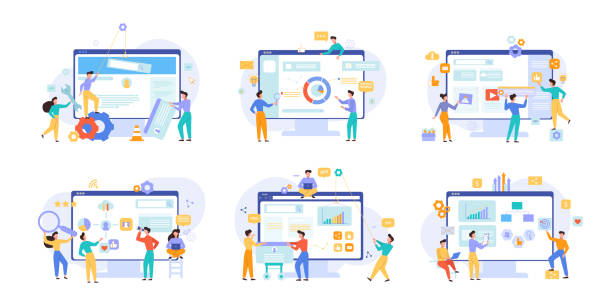
The world of e-commerce is evolving at an incredible pace, and e-commerce website design is no exception.
Emerging trends in technology and consumer behavior are shaping the future of online stores, and businesses must align themselves with these changes to remain competitive.
One of the most important trends is the integration of Artificial Intelligence (AI) and Machine Learning (ML).
AI can highly personalize the shopping experience, from precise product recommendations based on user purchase and browsing history to smart chatbots that improve customer support.
This level of personalization significantly increases customer satisfaction and conversion rates and transforms the e-commerce website into an intelligent shopping assistant.
Augmented Reality (AR) and Virtual Reality (VR) are also changing the way online shopping is experienced.
Imagine a customer being able to virtually place furniture in their room before buying it, or seeing clothes in 3D on their virtual model.
These technologies help customers make more informed decisions and reduce product return rates.
Many leading brands are investing in these technologies to provide more immersive and engaging shopping experiences on their e-commerce websites.
Voice Commerce is also growing with the increasing popularity of voice assistants like Siri and Alexa.
Optimizing your e-commerce website for voice search means using conversational keywords and complete sentences that users typically speak.
This trend creates new challenges for SEO and how search results are displayed but also provides new opportunities to reach customers.
Furthermore, direct purchasing from social networks (Social Commerce) and live streaming (Live Shopping) are rapidly becoming important sales channels.
Seamless integration of the online store with social platforms can make the shopping experience easier and more engaging for users.
Finally, attention to sustainability and corporate social responsibility will also gain more importance in future e-commerce website design.
Customers are increasingly looking for brands that uphold ethical and environmental values.
Transparent supply chain display, use of sustainable packaging, and support for local manufacturers can help create deeper connections with customers and differentiate your online store.
These trends indicate that the future of e-commerce website design goes beyond a simple platform for buying and selling; rather, it will be an intelligent, personalized, and responsible ecosystem.
سوالات متداول
| Row | Question | Answer |
|---|---|---|
| 1 | What is an e-commerce website? | It is a website that allows the online buying and selling of products or services, enabling users to view, select, and purchase products. |
| 2 | Why do we need e-commerce website design? | With an e-commerce website, businesses can reach a wider audience, operate 24/7, reduce operational costs, and increase their sales. |
| 3 | What are the main features of a successful e-commerce website? | Product catalog, shopping cart, secure payment gateway, order management system, user panel, product search and filter capabilities, and responsive design. |
| 4 | What are the common platforms for e-commerce website design? | Common platforms include WordPress (with WooCommerce plugin), Shopify, Magento, PrestaShop, or custom development (coding from scratch). |
| 5 | What is the importance of User Interface (UI) and User Experience (UX) in e-commerce website design? | Proper UI/UX design improves customer experience, reduces bounce rate, increases user time on site, and ultimately boosts conversion rates and sales. |
| 6 | What are the key stages of designing an e-commerce website? | These stages include planning and research, visual and UI design, technical development and coding, content entry, testing and debugging, launch, and support. |
| 7 | What is the importance of security in e-commerce websites? | Security is crucial for protecting sensitive user information (like payment and personal data) and building customer trust. Using SSL certificates and secure payment gateways is essential. |
| 8 | What does SEO mean for an e-commerce website? | It means optimizing the website for search engines like Google so that product and category pages appear higher in search results, attracting more organic (free) traffic. |
| 9 | What is the role of payment gateways in an e-commerce website? | A payment gateway is the bridge between the customer and the bank, enabling secure and online financial transactions and transferring money from the customer’s account to the seller’s account. |
| 10 | What does Responsive Design mean for an e-commerce website? | It means that the e-commerce website should display correctly and be easy to use on any device (mobile, tablet, laptop) without losing information or visual disruption. |
And other services of Rasaweb Advertising Agency in the field of advertising
Smart Advertising Campaign: A new service to increase website traffic through Google Ads management.
Smart Marketplace: Revolutionize customer behavior analysis with marketing automation.
Smart Advertising Campaign: A fast and efficient solution for customer acquisition, focusing on Google Ads management.
Smart Website Development: A combination of creativity and technology to attract customers by optimizing key pages.
Smart Link Building: A professional solution for digital branding, focusing on precise audience targeting.
And over a hundred other services in the field of internet advertising, advertising consulting, and organizational solutions
Internet Advertising | Advertising Strategy | Advertorial
Resources
E-commerce Website Design Guide (Iran Server)
E-commerce Website Design (Rastin Web)
What is E-commerce Website Design? (Modiran)
Important Tips for E-commerce Website Design (Nikosale)
To achieve your digital marketing goals and have an outstanding custom website design, Rasaweb Afarin is your best choice. With us, transform your business in the online world.
📍 Tehran, Mirdamad Street, next to Bank Markazi, Southern Kazeroun Alley, Ramin Alley, No. 6

